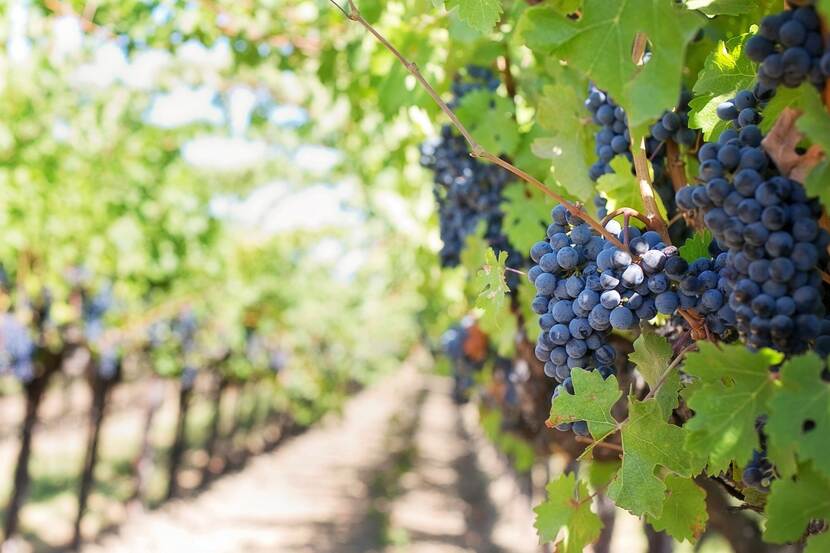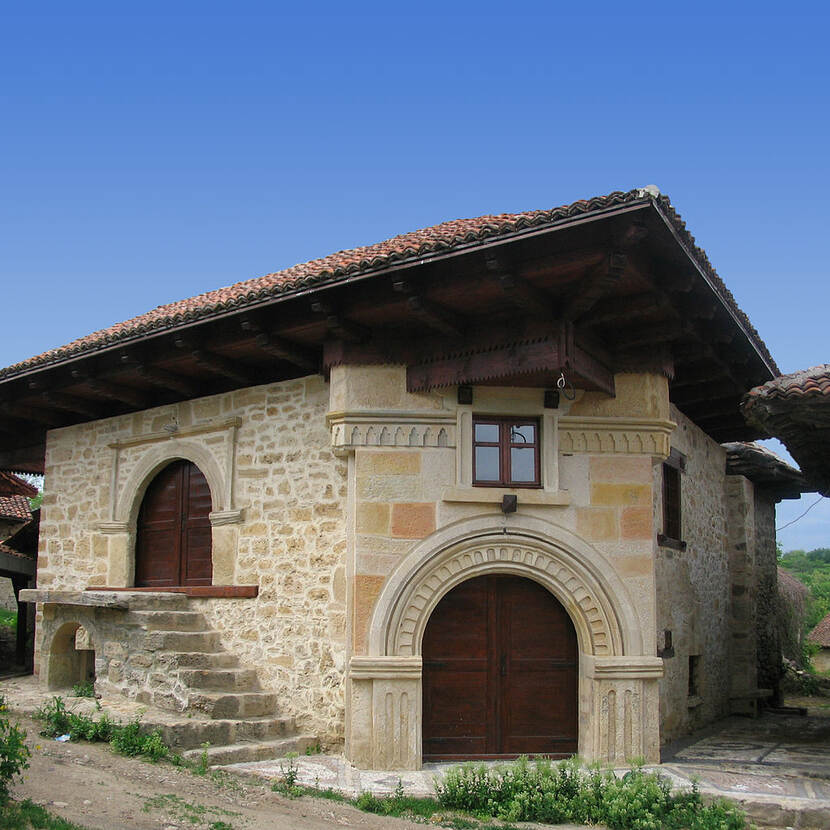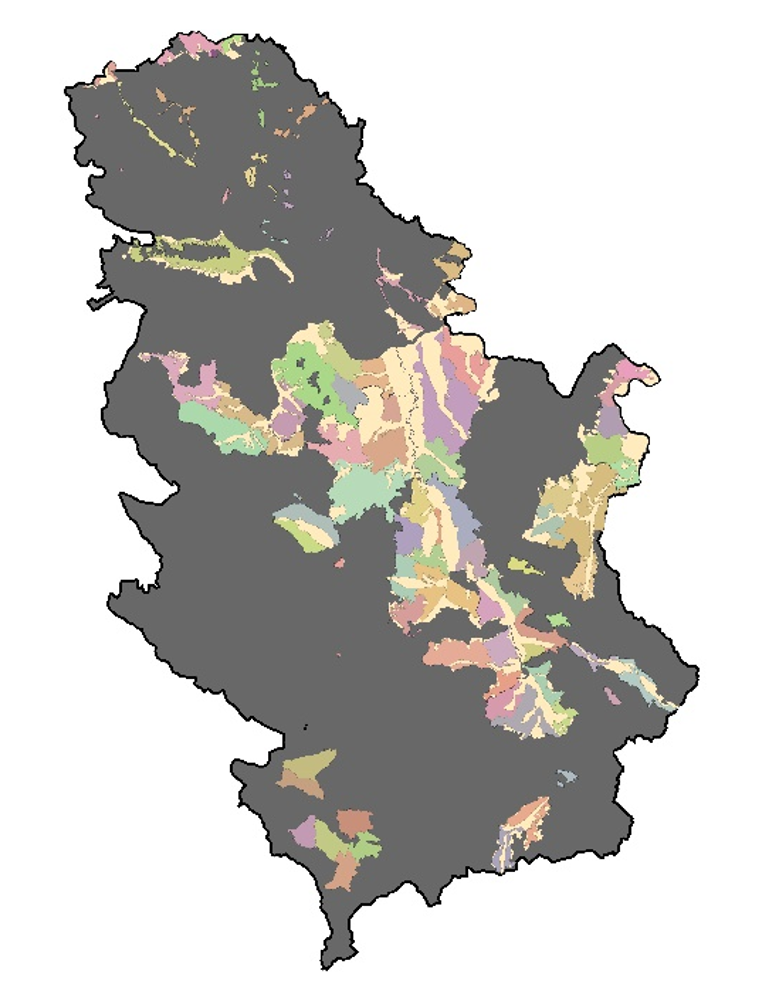The vineyard of the Balkans: Wine in Serbia
What you need to know about Serbian viticulture

On the sunlit hillocks of the central Balkans in Serbia, one finds emerald vineyards bearing clusters of sweet grape. These have been a part of the diverse Serbian landscape for as long as humans have settled in the region - Since before the times of Yugoslavia, the Middle Ages or even the Romans. Serbia, one of the first places with agricultural practices in Europe, was already a leader in two equally important things before antiquity: The manufacturing of fine bronze tools. And the masterful fermentation of wine.
Viticulture and the wine production sector in Serbia has a long-standing tradition and represents a still insufficiently utilized potential. The first story one will hear about Serbian wine tradition is how it helped French wine producers get through the infamous Phylloxera plague, a devastating vine pest, which hit French vineyards in the late 19th century and destroyed much of the world’s most famous wine regions. French enologists, frantically searching for grapes with wines that resembled the well-known French varieties, found it in the Negotin region, Eastern Serbia. Subsequently, Negotin wines made it to the tables of prestigious European capitals, and planting materials from the region had its role in restoring French vineyards. The rest is history.
History and characteristics
Wine and grape production went through different phases over the last hundred years. Similarly to Hungary, after the world wars, large collectivized, state-owned companies ran the national vineyards spanning over vast territories (135 thousand hectares in 1955). Yugoslavian wine production reached its peak in the 1970s with 6 million hectoliters produced annually. The later deterioration of large wineries and the practice of these companies purchasing grapes from smaller producers instead resulted in the decrease of vineyards in area size (58 thousand ha in 2009) but also to the survival of the traditions of small family grape and wine producers.
Since the end of socialism, the wine sector in Serbia has changed significantly. The structure of the sector is heterogeneous, but the highest share in terms of production is held by small family agricultural households.

Serbian grape producers can be divided into three groups:
- Small grape producers who produce grapes for their own use and small producers united in cooperatives;
- Grape producers who sell their harvested grape produce directly to wine production companies;
- Grape growers who make their own wine and sell it at the local market (small wineries) or at the national level or international markets (large estates).
Based on information by RSO in 2019, the land area used by vineyards was 20.4 thousand ha in 2018, which means that today, grape production is slowly decreasing in size.
Most of the small commercial grape producers do not produce or sell their own wine. They sell their harvested grape produce to wine production companies. On the other hand, the largest grape producers make their own wine and sell it at the market under their own brand.
Quantities
Grape production yields vary from year to year depending on climate conditions, however, the average grape production in the last 10 years in terms of quantity was 167.4 thousand metric tons. Grape production in 2018 was 149.6 t, which is around 10% lower than the 2017 harvest, and around 7% lower than the mean of the last five years.
|
2009 |
2010 |
2011 |
2012 |
2013 |
2014 |
2015 |
2016 |
2017 |
2018 |
|
|
Areas under vineyards (hа) |
22,702 |
22,506 |
22,206 |
21,201 |
21,201 |
21,200 |
21,201 |
21,201 |
21,201 |
20,406 |
|
Grape production (t) |
240,369 |
171,986 |
193,976 |
149,217 |
199,955 |
122,489 |
170,647 |
145,829 |
165,568 |
149,595 |
|
Wine production (thousand hl) |
2,381 |
1,488 |
1,581 |
1,264 |
1,453 |
198 |
241 |
362 |
375 |
331 |
Source: RSO
Wine regions
In order to reduce vineyard planting and maintenance costs and for producers to be able to obtain high-quality grapes, the Ministry of Agriculture carried out the viticulture zoning of the wine-growing areas in Serbia with the aim of establishing the EU’s PDO/PGI system for geographical indications. The Ministry carried out a new viticulture zoning of wine-growing areas, by which Serbia is divided into three major wine-producing units (wider areas), 22 wine regions and 77 wine sub-regions with a number of wine-growing oases.
Wine production
Wineries in Serbia can be divided into three groups:
- Wineries that have their own vineyards (largest number of wineries);
- Wineries that do not have own vineyards
- Wine cooperatives uniting grape and wine producers
In accordance with information from the Winery Register (www.minpolj.gov.rs and www.cevvin.rs) (March 2019), a total of 353 wineries are engaged in the production of wine in Serbia. The total maximal capacities for grape processing in market-oriented wineries analyzed in 2019 (310 wineries) within this register are 195 thousand kg of grapes.
In the structure of wine production, based on data from the Winery Register for the last three years (2016-2018), the production of wine without geographical indications was dominant in relation to wines with geographical indications.

Market
The domestic wine output is currently not sufficient supply the Serbian market, and generally speaking, the import of wine is roughly double the size of the export, both in terms of quantity and in terms of the value of trade .
Import
According to information by the RSO, in the 2015 to 2018 period, Serbia imported the biggest volume of wine from CEFTA countries, primarily from North Macedonia (annual average of 167.8 thousand hectoliters, with the average value of €12.4 million), followed by Montenegro (33.5 thousand hl, €6.5 million). With respect to EU members, the largest quantities of wine were imported from Italy (7.6 thousand hl, €2.355.730) and France (2.3 thousand hl, €1.622.296).
Export
According to the same source, in the period from 2015 to 2018, Serbia has exported the largest quantities of wine to the Russian Federation (44.3 thousand hl, €4.800.800). Larger quantities of wine are exported to the CEFTA market, primarily to Bosnia and Herzegovina (35.6 thousand hl, €4.228.870) and Montenegro (16 thousand hl, €2.823.777).
|
2009 |
2010 |
2011 |
2012 |
2013 |
2014 |
2015 |
2016 |
2017 |
2018 |
|
|
EXPORT |
||||||||||
|
Total export |
11,246 |
11,325 |
15,184 |
23,469 |
12,437 |
11,968 |
10,591 |
9,866 |
11,375 |
11,792 |
|
CEFTA |
7,789 |
6,451 |
5,579 |
5,449 |
5,212 |
5,155 |
5,776 |
4,869 |
4,878 |
4,695 |
|
ЕU |
665 |
1,329 |
5,682 |
14,103 |
2,062 |
569 |
603 |
486 |
899 |
1,410 |
|
Others |
2,792 |
3,545 |
3,923 |
3,917 |
5,163 |
6,244 |
4,212 |
4,511 |
5,598 |
5,687 |
|
IMPORT |
||||||||||
|
Total import |
21,501 |
29,043 |
32,886 |
33,044 |
25,361 |
26,309 |
24,855 |
29,226 |
27,492 |
22,355 |
|
CEFTA |
19,228 |
26,800 |
30,336 |
30,948 |
23,448 |
24,484 |
23,005 |
27,407 |
25,842 |
20,462 |
|
ЕU |
2,202 |
2,137 |
2,419 |
1,985 |
1,825 |
1,730 |
1,787 |
1.764 |
1,581 |
1,839 |
|
Others |
71 |
106 |
131 |
111 |
88 |
95 |
63 |
55 |
69 |
54 |
|
SALDO |
||||||||||
|
Total saldo |
-10,255 |
-17,718 |
-17,702 |
-9,575 |
-12,924 |
-14,341 |
-14,264 |
-19,360 |
-16,117 |
-10,563 |
|
CEFTA |
-11,439 |
-20,349 |
-24,757 |
-25,499 |
-18,236 |
-19,329 |
-17,229 |
-22,538 |
-20,964 |
-15,767 |
|
ЕU |
-1,537 |
-808 |
3,263 |
12,118 |
237 |
-1,161 |
-1,184 |
-1,278 |
-682 |
-429 |
|
Others |
2,721 |
3,439 |
3,792 |
3,806 |
5,075 |
6,149 |
4,149 |
4,456 |
5,529 |
5,633 |
Import, export and trade balance of wine (does not include aromatized wine) (thousand); 2009-2018 – Source: RSO
Much work has been done over the past 10-15 years in Serbia to reform and advance the wine sector, from the harmonization of legislation with the EU requirements and standards, through state subsidies for investments in primary production and in processing, to the increase of competitiveness and affirmation of Serbian wines and autochthonous varieties. Still, much is to be done, especially in terms of improving the planting materials, augmenting production capacities, and improving marketing and packaging.

Conclusion
With the end of socialism, the production of wine decreased in Serbia. With the development of the domestic sector however, new avenues for innovation and business investments have opened up. There is room to grow, especially in plant propagation materials and production infrastructure. However, Serbia has the potential to become a major wine producer and exporter again.
Wine is not just another agriculture product. It promotes touristic destinations and the cultural heritage of the country as well as improves living conditions in rural areas. With the development of the hospitality industry and fine dining, wine production is gaining visibility and importance.
Picture credit:
"Purple grape" by Jill Wellington via Pixabay
"Rajačke pivnice - Rajac wine cellars" by Đorđe Alfirević via Wikimedia
"Wine glass" by Jill Wellington via Pixabay